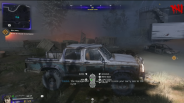An immunotherapy drug called nivolumab (Opdivo) as able to increase the survival rate of melanoma patients by up to five years.
More than 34 percent of patients with malignant metastatic melanoma stayed alive five years after first receiving the immunotherapy drug in a stage I clinical testing.
The five-year survival record for patients with this type of cancer was 16.6 percent from the year 2005 to 2011, says the National Cancer Institute's SEER data.
F. Stephen Hodi from the Ludwig Center at Harvard Medical School says the study is the first extended, follow-up investigation of information from a clinical testing of this type of immunotherapy. He adds that it is highly encouraging that some patients diagnosed with melanoma are experiencing long-term benefits.
The Trial
In the clinical testing that started in 2008, researchers gathered individuals who had taken a maximum of five treatments before, excluding ipilimumab, which has been found to shrink cancer cells when combined with nivolumab. They were given one of the five dosages of nivolumab. These included the subsequent recommendations of 3 milligrams per kilogram of body weight every two weeks for a two-year period.
The team followed the 107 participants for up to five years and calculated the overall survival rate. About 67 percent of the study subjects were males.
The results of the testings exhibited that a number of subjects showed tenacious responses that continued even after the patients had stopped taking the drug.
Survival Rates
Patients who survived after years of treatment were 34 percent. Such status appeared to have a steady state at about 48 months or four years. This signifies a long-term advantage in some of the patients. However, Hodi says additional follow-up is required to completely acknowledge the benefits of nivolumab.
The rates of survival were almost the same across groups of patients who had 3 milligrams per kilogram dose and the 90 participants who received one of the other doses, which include 0.1 milligrams, 0.3 milligrams, 1 milligram and 10 mg per kilogram.
Worthy to note is the drop in the overall survival rates from the first to the fourth year of treatment. At the end of the first year, the overall survival rate was 64.7 percent. It fell to 47.1 percent, 41.2 percent and 35.3 percent during the second, third and fourth year of treatment respectively. The rate however plateaued until the end of the follow up, which was in the fifth year.
"These data provide a foundation for establishing anti-PD-1 therapy as another standard for melanoma patients, and hopefully this would translate to other cancer types as well," says Hodi.
The research was presented at the AACR Annual Meeting 2016.
ⓒ 2025 TECHTIMES.com All rights reserved. Do not reproduce without permission.




